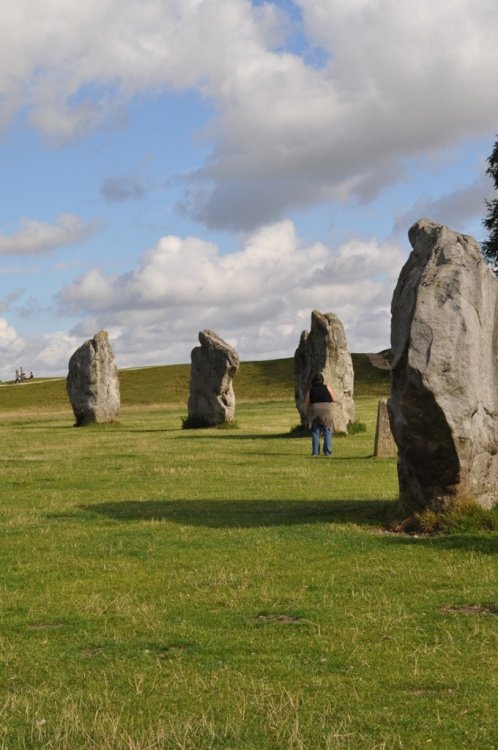Avebury is a Neolithic henge monument containing three stone circles, around the village of Avebury in Wiltshire, in southwest England. Unique amongst megalithic monuments, Avebury contains the largest stone circle in Europe, and is one of the best known prehistoric sites in Britain. It is both a tourist attraction and a place of religious importance to contemporary Pagans.Constructed around 2600 BCE,during the Neolithic, or 'New Stone Age', the monument comprises a large henge with a large outer stone circle and two separate smaller stone circles situated inside the centre of the monument. Its original purpose is unknown, although archaeologists believe that it was most likely used for some form of ritual or ceremony. The Avebury monument was a part of a larger prehistoric landscape containing several older monuments nearby, including West Kennet Long Barrow and Silbury Hill.By the Iron Age, the site had been effectively abandoned, with some evidence of human activity on the site during the Roman occupation. During the Early Medieval, a village first began to be built around the monument, which eventually extended into it. In the Late Medieval and Early Modern periods, locals destroyed many of the standing stones around the henge, both for religious and practical reasons. The antiquarians John Aubrey and William Stukeley however took an interest in Avebury during the 17th century, and recorded much of the site before its destruction. Archaeological investigation followed in the 20th century, led primarily by Alexander Keiller, who oversaw a project of reconstructing much of the monument.Avebury is owned and run by the National Trust, a charitable organisation who keep it open to the public.It has been designated a Scheduled Ancient Monument,as well as a World Heritage Site, in the latter capacity being seen as a part of the wider prehistoric landscape of Wiltshire known as Stonehenge, Avebury and Associated Sites.At grid reference SU10266996, Avebury is respectively about 6 and 7 miles from the modern towns of Marlborough and Calne. Avebury lies in an area of chalkland in the Upper Kennet Valley, at the western end of the Berkshire Downs, which forms the catchment for the River Kennet and supports local springs and seasonal watercourses. The monument stands slightly above the local landscape, sitting on a low chalk ridge 160 m above sea level; to the east are the Marlborough Downs, an area of lowland hills. The site lies at the centre of a collection of Neolithic and early Bronze Age monuments and was inscribed as a World Heritage Site in a co-listing with the monuments at Stonehenge, 17 miles to the south, in 1986. It is now listed as part of the Stonehenge, Avebury and Associated Sites World Heritage Site. The monuments are preserved as part of a Neolithic and Bronze Age landscape for the information they provide regarding prehistoric people's relationship with the landscape.Radiocarbon dating and analysis of pollen in buried soils have shown that the environment of lowland Britain changed around 4,250–4,000 BCE. The change to a grassland environment from damp, heavy soils and expanses of dense forest was mostly brought about by farmers, probably through the use of slash and burn techniques. Environmental factors may also have made a contribution. Pollen is poorly preserved in the chalky soils found around Avebury, so the best evidence for the state of local environment at any time in the past comes from the study of the deposition of snail shells. Different species of snail live in specific habitats, so the presence of a certain species indicates what the area was like at a particular point in time.The available evidence suggests that in the early Neolithic, Avebury and the surrounding hills were covered in dense oak woodland, and as the Neolithic progressed, the woodland around Avebury and the nearby monuments receded and was replaced by grassland.
Source:
Picture:Link:Wikipedia:Link:

0 comments:
Post a Comment